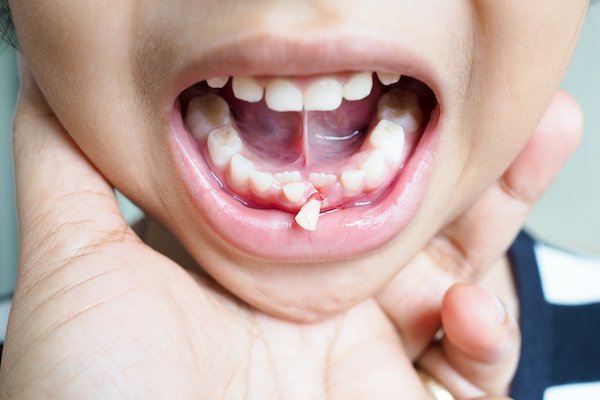Table of Content
If you are planning to make a small flower planter then use a simple bowl for mixing cement. If your pot is large, then it is better to take a bucket. Before making the cement, prep your containers. Pour some canola oil on a paper towel and coat the inside of each container. Think of it like you're baking a cake—greasing the molds will help prevent the cement from sticking to the plastic. Push the smaller mold into the center of the concrete, leaving an adequate thickness for the bottom of the planter.
In this case, 100% of readers who voted found the article helpful, earning it our reader-approved status.
Step 6: Carefully Remove Cement Planter
Follow the instructions on your bag of cement to get the right ratio. Start by mixing equal parts cement mix and water. Add more cement mix if it looks especially wet. Keep mixing until you have a thick but slightly viscous consistency, almost like brownie batter. Cement accents are gaining popularity as more people work to create calming, organic modernism-inspired spaces complete with natural elements.
You can run into situations where a cement pot needs to be wet cured if you are working in dry and/or windy conditions, or hot conditions. The way to wet cure concrete is to mist it with water and then wrap it with plastic after the concrete has been cast . Wet curing is simply keeping the cement and concrete moist during the curing process. There can also be mixes that are rapid setting, but not necessarily quick curing and can still take a day to cure. If you are looking for plants that are great for pots during winter, you can read about those here. You will need a way for water to escape and will need to create a drainage hole.
Let the Cement Dry
The plastic bag will prevent the concrete from sticking to the small container and will make it easier to remove the mold. Wipe the inner and outer molds with motor oil or release spray. We put our planters on the garage floor and leveled them with wood shims. Use a paintbrush to thoroughly coat the outside of the smaller mold with cooking oil. However, if your plant does require acidic soil, then there is a very easy workaround. For mixes that are harder and not as easily sanded, I like to use diamond grit sanding sponges on planter edges.
Use sandpaper to sand down your planter if it feels or looks rough. Sandpaper or a sanding block can also help get rid of excess cement fragments. Smooth the edges of your planter to your liking. If you’re going for a more organic look, you’ll probably need less sanding. More sanding is required for more sleek, modern vibes. Get DIY project ideas and easy-to-follow crafts to help you spruce up your space.
How to make concrete planters and everything you need to know for making planters at home.
Lay the potting mix over top of that and plant as desired.Concrete Mold Release Spray – Motor Oil also works well. That’s ok, because I have a new DIY addiction – concrete planters! Although I love the industrial and unassuming look of molded concrete, I wanted to stretch my options by also using vibrant color. For that, these planters are painted and sealed. Work is better to start with the choice of form. This is necessary in order to determine the walls of your future flower planter.

Concrete is not actually toxic and is not toxic to plants. That said, concrete can potentially be harmful to some plants. The reason for this is because concrete contains lime which is highly alkaline.
Creating Drainage Holes For A Pot Made From Concrete
For very small planters, one ¼” hole should suffice. This is because succulents like soil that is more on the alkaline side and concrete leaches lime which is highly alkaline. However, you can plant any type of plant in a concrete planter, but you may want to soak it in water first. They both contain lime and will leach alkalinity. The ph level of the soil will be approximately the same with either concrete or cement.
Check the instructions on your concrete bag to determine exact curing times. Place the smaller container carefully on top of the concrete in the center of the larger container. Press the smaller container into the concrete until the bottom of the smaller container rests on top of the pipes.
“Cure” does mean demold- so when it says it cures in one hour, you can remove it from the mold. It’s the term “set time”, or “setting time” that sometimes people mistake with cure time. Set time means the cement/concrete is workable up until the end of the set time, but you cannot remove it from the mold until it has cured. So if the set time is 20 minutes, snd cure is 1 hour, you can’t remove it until 1 hour. Otherwise, you might see set time is minutes and cure time is 24 hours.

Lauren Murphy is a DIY expert and writer with over five years of hands-on experience cooking, crafting, and making home decor projects. Lauren has also written for Earth 911, Forbes Advisor, and HuffPost. Glass can be used too, but could break if no lubricants etc. are added. If you're using quick-dry cement, you'll have about 15 minutes before the cement sets. Weigh down the smaller container by filling it with stones or sand.
I used Unicorn SPiT in this project specifically because it has a dimensional quality where colors look velvety in texture and then sealed them. As you work up, use something to shake the container to get rid of bubbles. We used an electric sander along the sides of the container to vibrate, but you could also bang on it evenly as you work up. The more you vibrate, the less air bubbles you will have in the mix.

You’re better off filling a plastic bottle with sand to make an open tube and using that. The easiest way to get a planter smooth is by using a smooth mix. Once your new pot is cured, it’s ready for use. It can be placed outside and used like any other pot. Concrete slabs can shrink as much as 1/2 inch per 100 feet.
Use Concrete to Accent Garden Style
You can neutralize concrete by soaking it in water for about three days. Soaking concrete or cement in water leaches lime through the pores. Coat the inside of the larger box with cooking spray. Spread the non-stick spray around to get an even coating on the inside of the larger box. The cooking spray will make it so that the concrete doesn’t stick to the sides of the larger container. Finish adding the concrete mixture to the space between the larger and smaller container.
Different shapes are possible, but keep in mind that if the container has a bevel that goes in and out again, that is called an undercut. But the short and quick of it is that you can reuse any plastic container that is straight or slightly beveled. Another danger to working with concrete is that the dry mix dust is harmful to your eyes.





























